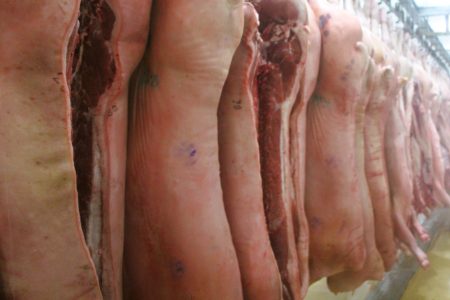Philippine pork imports are projected to rise by 7% to 750,000 in 2026, according to the USDA’s latest GAIN report. This growth reflects persistent local production challenges and rising consumer demand driven by population and economic expansion.
Brazil remains the country’s top pork supplier, accounting for more than half of imports in H1 2025 (see Table). Expanded market access allows Brazilian exporters to ship pork, beef, and poultry to the Philippines. its competitive pricing continues to attract Philippine food processors and retailers, supporting its dominant position in the market.
Table. Global pork exports to the Philippines (in tons)
| Reporter | Calendar Year | January to June | ||||
| 2023 | 2024 | % change | 2024 | 2025 | % change | |
| Total | 448,313 | 569,089 | 33 | 255,355 | 329,452 | 29 |
| Brazil | 137,586 | 276,866 | 101 | 87,964 | 178,758 | 103 |
| EU 27 | 144,062 | 165,899 | 15 | 78,368 | 71,618 | -13 |
| Canada | 110,716 | 100,611 | -9 | 61,677 | 53,622 | -13 |
| US | 34,747 | 29,764 | -14 | 15,070 | 14,652 | -3 |
| South Korea | 5,662 | 8,968 | 58 | 4,266 | 4,295 | 1 |
| UK | 7,224 | 5,780 | -20 | 3,868 | 4,046 | 5 |
| China | 70 | 91 | 30 | 49 | 29 | -41 |
| Taiwan | 137 | 578 | 322 | 410 | 58 | -86 |
| Others | 8,109 | 7,532 | -7 | 3,665 | 2,374 | -35 |
Source: Trade Data Monitor (via USDA GAIN Report)
Imports from the EU and Canada may decline due to ASF risks and reduced sow numbers. However, pork shipments from the US are forecast to increase through 2026.
Reduced tariffs under will continue to support import growth. Most favored nation duties on pork were lowered to 15% (in-quota) and 25% (out-quota), effective until 2028.
Local production shows signs of recovery
Local pork production is projected to rise by 2% to around 980,000 tons in 2026. This marks a modest rebound after two years of decline caused by African swine fever (ASF).
ASF outbreaks in 2024 cut output by 5%, followed by a 5.6% drop in H1 2025. As of July 2025, the national swine inventory had fallen to 9.01 million heads.
However, cases have since declined. Improved vaccine coverage, stronger biosecurity, and better swine genetics are supporting the recovery. Repopulation continues, and the rising gilt demand signals renewed confidence among producers.
Consumption growth sustains import demand
The USDA sees pork consumption in the Philippines rising by 4% to 1.73 million tons in 2026. This growth is driven by the growing population—expected to reach 121.9 million in 2026—and an improving economy.
Meanwhile, the Bangko Sentral ng Pilipinas projects inflation to remain within 2.0-4.0%. Lower inflation will support consumer spending on food, beverages, and hospitality services.
Pork remains a staple protein for Filipino households, despite price increases linked to limited local supply.
Value-added pork products expand across channels
Vertically integrated industry players are diversifying pork offerings beyond fresh cuts, to meet changing consumer habits.
Ready-to-cook and ready-to-eat pork products are now widely available. They can be bought in various retail channels, including wet markets, meat shops, supermarkets, convenience stores, and online platforms.
This shift reflects both evolving consumer preferences and improved distribution networks nationwide.

